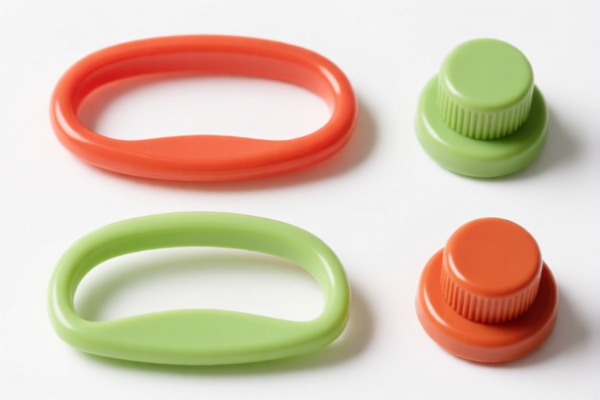| HS Code | Official Doc | Tariff Rate | Origin | Destination | Effective Date |
|---|---|---|---|---|---|
| 4202329900 | Doc | 72.6% | CN | US | 2025-05-12 |
| 4202929310 | Doc | 72.6% | CN | US | 2025-05-12 |
| 4205008000 | Doc | 55.0% | CN | US | 2025-05-12 |
| 3926903300 | Doc | 36.5% | CN | US | 2025-05-12 |
| 3926909989 | Doc | 42.8% | CN | US | 2025-05-12 |
| 3923210080 | Doc | 58.0% | CN | US | 2025-05-12 |
| 3923900080 | Doc | 58.0% | CN | US | 2025-05-12 |




Tobacco Bag
A tobacco bag is a flexible pouch for carrying loose tobacco, typically used for pipe smoking or hand-rolled cigarettes. These bags are designed to maintain the freshness and aroma of the tobacco while providing convenient portability.
Material
Traditionally, tobacco bags were constructed from materials offering good moisture retention and odor-sealing properties. Common materials include:
- Leather: A durable and classic choice, leather bags range from smooth calfskin to rugged, textured hides. Leather offers good protection and develops a patina with use.
- Canvas: Often waxed canvas, providing water resistance and a more casual aesthetic.
- Cloth: Various tightly woven cloths, sometimes lined with other materials to enhance moisture control.
- Metal: Less common, but tin or other metals can be used, particularly for pouches intended for travel or more robust protection.
- Synthetic Materials: Modern bags may utilize nylon or other synthetics for water resistance and durability.
Purpose
The primary purpose of a tobacco bag is to:
- Store Tobacco: Keep loose tobacco protected from drying out and contamination.
- Maintain Freshness: Help preserve the flavor and aroma of the tobacco.
- Portability: Allow smokers to carry a supply of tobacco conveniently.
Function
A typical tobacco bag functions by:
- Sealing: Bags generally feature a closure mechanism (drawstring, flap, zipper, or magnetic clasp) to minimize air exposure.
- Protection: The material provides a barrier against physical damage and environmental factors.
- Organization: Some bags include internal compartments for different tobacco blends or accessories.
Usage Scenarios
Tobacco bags are used in a variety of settings:
- Pipe Smokers: Essential for carrying tobacco to and from a smoking location, or for having a variety of blends available.
- Hand-Rolled Cigarette Smokers: Useful for carrying tobacco and papers.
- Travel: Protecting tobacco during trips.
- Everyday Carry: For smokers who prefer to carry their tobacco with them regularly.
Common Types
- Simple Drawstring Pouches: The most basic type, often made of cloth or leather.
- Roll-Top Pouches: Feature a roll-top closure, providing a secure seal.
- Pouch with Flap: A flap covers the opening, often secured with a magnetic clasp or buckle.
- Compartmented Pouches: Include separate sections for tobacco, papers, filters, and other accessories.
- Rigid Pouches/Cases: Hard-shelled cases offering maximum protection, often with internal dividers.
- Tobacco Rolls: Cylindrical pouches, often made of leather, designed to hold a specific amount of tobacco for easy access.
Tobacco bags fall under articles of leather or of composition leather, or of sheeting of plastics, of textile materials, of vulcanized fiber or of paperboard, or wholly or mainly covered with such materials or with paper. Specifically, they are categorized as articles of a kind normally carried in the pocket or in the handbag.
Here are the relevant HS codes based on the provided reference material:
- 4202329900: This HS code covers trunks, suitcases, vanity cases, attache cases, briefcases, school satchels, spectacle cases, binocular cases, camera cases, musical instrument cases, gun cases, holsters and similar containers; traveling bags, insulated food or beverage bags, toiletry bags, knapsacks and backpacks, handbags, shopping bags, wallets, purses, map cases, cigarette cases, tobacco pouches, tool bags, sports bags, bottle cases, jewelry boxes, powder cases, cutlery cases and similar containers, of leather or of composition leather, of sheeting of plastics, of textile materials, of vulcanized fiber or of paperboard, or wholly or mainly covered with such materials or with paper. It specifically includes articles of a kind normally carried in the pocket or in the handbag, with an outer surface of sheeting of plastics or of textile materials, and further specifies with an outer surface of textile materials. The basic tariff is 17.6%, with an additional 25.0% tariff, increasing to 30% after April 2, 2025, resulting in a total tariff of 72.6%.
- 4202929310: This HS code also covers the same range of articles as 4202329900 – trunks, suitcases, etc., including tobacco pouches – but specifies “Other” categories. It further defines these as having an outer surface of sheeting of plastics or of textile materials, and then “Other”, specifying “Other”, and finally “With outer surface of textile materials”, and then “Other Containing 85 percent or more by weight of silk or silk waste”. The tariff details are identical to 4202329900: basic tariff of 17.6%, additional 25.0%, increasing to 30% after April 2, 2025, for a total of 72.6%.
It is important to note that the applicable tariff depends on the material composition of the tobacco bag, particularly the outer surface material and whether it contains 85% or more silk or silk waste.
Customer Reviews
No reviews yet.